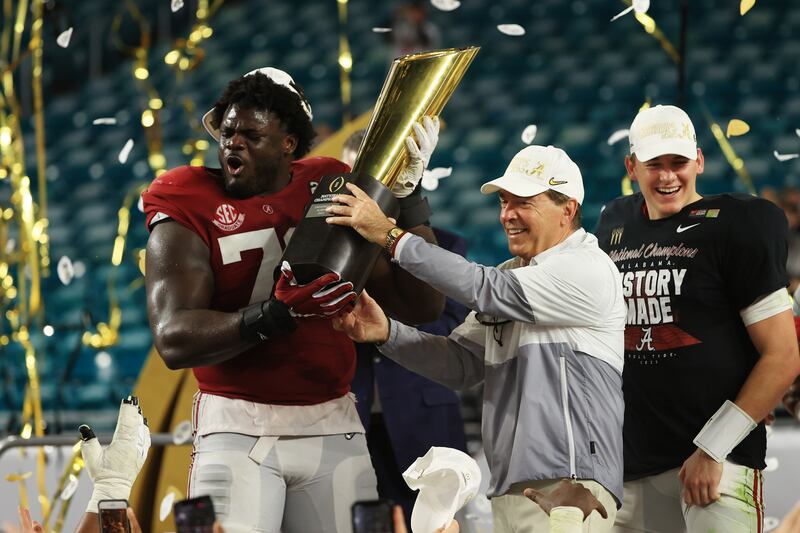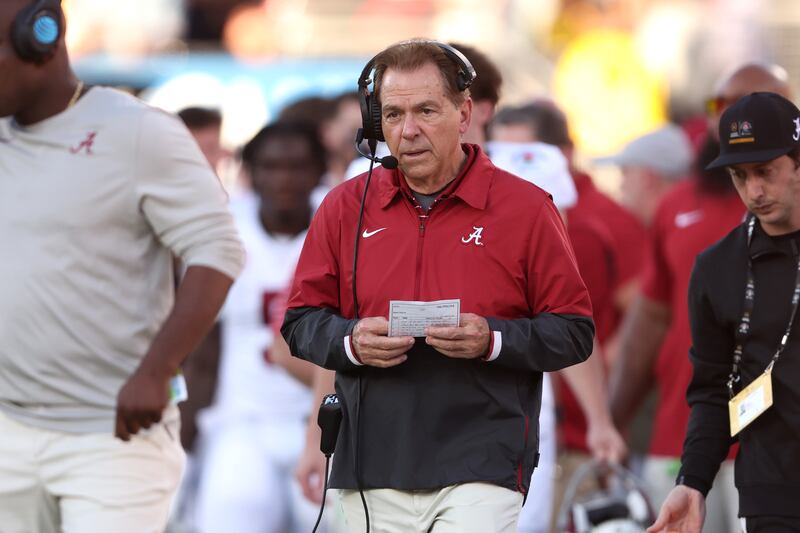Nick Saban rolled into Washington, DC last week, the star turn at a Congressional panel investigating student athletes, who pack out university stadia, daring to make money from name, image and likeness (NIL) rights.
He sat next to oleaginous senator Ted Cruz and received all the deference due a recently retired 72-year-old acknowledged as the greatest living college gridiron coach. At one point, he unfurled a homespun tale about how his decision to step away was partly prompted by a chat with his wife Terry.
“She said, ‘All the players care about is how much you’re going to pay them. They don’t care about how you’re going to develop them, which is what we’ve always done. So why are we doing this?’” said Saban.
“That was kind of a red alert that we really are creating a circumstance that is not beneficial to the development of young people, which is why I always did what I did.”
READ MORE
Saban’s last contract at the University of Alabama was $11.7m a year and he’s estimated to have made $150m in salary during his coaching career. Nobody ever earned more prowling the collegiate sidelines.
During his final campaign, he trousered $1m for a weekly spot on The Pat McAfee Show on ESPN, and the same network will now pay him multiples of that to work as an analyst. One of his companies recently spent $700m buying car dealerships in Florida, and nobody knows how much he got for putting his name to the Nick Saban Signature Series Mercedes Benz Sprinter Van.

Yet for all but three seasons of Saban’s five decades in the sport, the young lads in his charge (most of whom were African American) were never paid a cent for their immense contributions to his seven national championships. Not a cent.
An estimated 86 per cent of those who play college football come from houses where they lived on or below the poverty line. Teenage boys emerging from parlous economic circumstances view the most punishing of sports as a potential way to lift their family out of subsistence. But it was illegal for them to profit from what they achieved on the field until three years ago.
After presiding over a sporting universe where these so-called student-athletes were blatantly exploited for their unpaid labour, the NCAA, the colleges’ ruling body, relented in 2021, and finally allowed these indentured servants to earn money through NIL endorsements.
“It’s long overdue,” said one former player in an interview for Nathan Kalman-Lamb and Derek Silva’s forthcoming book, The End of College Football.
“But at the same time, it’s f**ked because it’s everyone saying, ‘Yeah, these guys can get paid now’, but we aren’t getting paid for football or the value we bring through football. We are getting paid for a side hustle that we have to seek out.”
The majority of college gridiron players receive between $10,000 and $50,000 in NIL money per season, with the top five in any squad getting six figures, and a smattering of box office stars reaching a million.
To put those numbers in perspective, Alabama’s football team generates $130m in annual revenue, and ESPN recently agreed a six-year $7.8bn contract for rights to the college play-offs. Of the coaches competing to win that tournament, 10 earn salaries over $9m and the 25th highest-paid in the profession is on a paltry $6.3m.

A man who never left himself a dollar short, Saban is concerned players are over-thinking their financial potential, and, while accepting they should be compensated, is apparently worried they will be treated like employees rather than students. As if that’s not how they have always been regarded. Witness how many times they fly across the country for matches during exam season.
Some might wonder if he and his ilk are simply worried about losing control of a game that has always been rigged in their favour. Power has reverted to players, a demographic historically fobbed off with scholarships (often guided towards facile and worthless degrees) now get to opt for the highest bidder and make bank.
Certain colleges are putting together consortiums of alumni to offer lucrative endorsement packages to attract the finest talent. The best will go where they can earn most and get paid what they deserve. Like Saban always ensured he did on and off the field even if he’s now calling for revenue sharing in the name of competitive balance. Players are also using the transfer portal to switch schools in search of more rewarding opportunities. Exactly the same way coaches have always done.
With less than two per cent of university players making it to the NFL, a journeyman putting his body on the line will carry the after-effects of injuries sustained for the rest of his life, and the college health insurance stops covering treatment two years after he departs campus. Yet Saban and others went to Congress because they think federal NIL legislation is required before those on the field somehow lose the run of themselves.
“But every single coach, in every single revenue sport, if you’re paying attention, is saying the same thing: ‘This is the only thing that any recruit is asking about now when they come on visits,’” said Scott Van Pelt, the usually excellent and highly-paid ESPN host last week, “And I don’t believe that it’s pearl-clutching to wonder if maybe that’s not ideal.”
It is ideal and it’s long, long overdue.

















